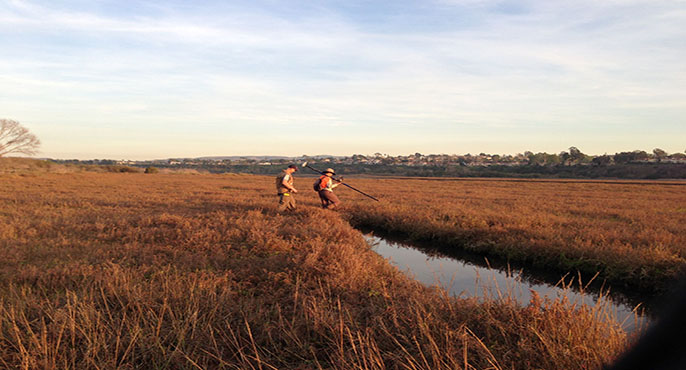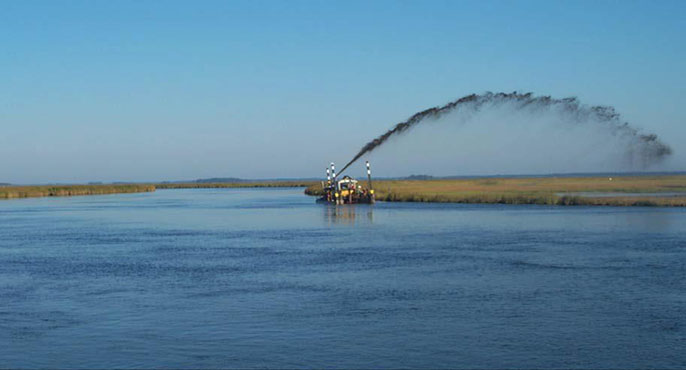Global sea levels are projected to rise by as much as eight feet over the next century, threatening coastal infrastructure and ecosystems alike. Among the areas most vulnerable to sea level rise are coastal wetlands that sit at or near sea level. Wetlands play a critical role in buffering coastlines against flooding, recharging groundwater, providing habitat for vulnerable plant and animal communities, and creating opportunities for aesthetic and recreational enjoyment. About half of all wetland areas across Southern California are projected to be permanently submerged by 2100.
SCCWRP is part of a network of researchers working to help Southern California’s wetland management community develop science-informed approaches for optimally protecting and preserving coastal wetlands in the face of global climate change. Researchers are documenting vulnerability of major wetland areas to sea level rise, exploring the efficacy of multiple possible management interventions, and crafting regional strategies that support development of robust, ecologically interconnected wetland networks.

Multiple wetland management options
Southern California’s coastal wetland management community has essentially four main options for responding to the threat of sea level rise in vulnerable wetland areas. Each strategy offers potential benefits as well as drawbacks:
- Raise the elevation of existing wetlands: To keep pace with sea level rise, sediment could be spread across existing wetlands at regular intervals, which could help preserve the status quo. But not all wetlands are likely to respond favorably to engineered accretion.
- Create new wetlands at higher elevations: New wetlands could be created at higher elevations to allow gradually migrate to higher ground as sea levels rise, which could lead to net gains in wetland area. But significant capital and political would be required to re-designate land uses and relocate infrastructure.
- Build protective infrastructure for existing wetlands: Levees, berms and other infrastructure could be constructed to insulate wetlands from rising sea levels. But wetlands would become geomorphically isolated islands that would lose much of their interconnected ecological functioning.
- Facilitate transition of wetlands to submerged habitat: Wetlands managers could make a conscious choice to let wetlands drown without replacing them. But it’s likely to be a politically and socially difficult decision to give up on wetlands, especially after decades of investments to protect and preserve them.

Preserving maximum ecological functioning
SCCWRP and its research partners recognize that effective wetlands management in Southern California will likely involve a combination of solutions to preserve maximum ecological functioning. To optimize outcomes, researchers are developing sophisticated computer models that simulate how each of these solutions would alter the trajectory of sea level rise’s impacts on coastal ecosystems in the coming decades. Over the long term, researchers’ goal is to understand which wetland management strategies make the most sense for which areas, develop long-term wetland monitoring strategies, and create strategies for managers to systematically incorporate these solutions into long-term planning decisions.

